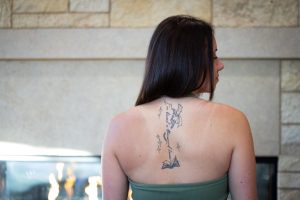SAD: more than the winter blues
February 5, 2015
 marksdailyapple.com
marksdailyapple.com
Winter break is over, but there are still months left of bitterly cold weather and darkness. It’s during this time that many people suffer from Seasonal Affective Disorder (SAD).
Mayo Clinic described SAD as “a type of depression that’s related to changes in seasons — SAD begins and ends at about the same times every year.”
SAD is highly prevalent in the fall and winter months when days have less sunlight than in the summer. It is very similar to depression and results in many of the same feelings, but while depression may stem from a variety of different causes, SAD is thought to be caused primarily by a reduced amount of sunlight. The lack of sunlight affects people’s circadian rhythms, also called their biological clock, as well as their serotonin and melatonin levels. A lack of serotonin may stimulate depression, and disrupted levels of melatonin change sleep patterns and mood.
Symptoms of SAD vary from person to person, but they may include:
Irritability
Tiredness or low energy
Problems getting along with other people
Hypersensitivity to rejection
Heavy, “leaden” feeling in the arms or legs
Oversleeping
Appetite changes, especially a craving for foods high in carbohydrates
Weight gain
There are multiple different way to combat SAD depending on the severity of the disease. For mild SAD, getting outside on sunny days and trying to do enjoyable activities may help reverse the effects. In more severe cases, consulting a doctor is the best option. The student health center is a great resource to go to if any student feels like they are experiencing SAD and need help coping with it.
The doctor may prescribe light therapy, which is emitted from a box that emits light that mimics natural sunlight. It has very few side effects and has shown significant results against SAD. One can even buy a personal light-box if it proves effective.
Another option is medication, which, again, is reserved for more severe cases. The most commonly prescribed medications for SAD are antidepressants.
Along with these methods, sufferers can also try modifying their apartment or dorm room to help alleviate some of the symptoms. Opening windows to allow the maximum amount of sunlight to come in during the day will help the home feel brighter.
Going outside, even on cloudy or cold days, will help in absorbing light and make you feel better. Exercising regularly is another great method to improve your mood.
SAD affects many people, especially in a place like La Crosse where night comes early and winter lasts longer than many other places. If you’re not affected by the disease, try to be understanding and encouraging if you know someone that does. If you are one those that suffer from it, don’t be discouraged because there are many simple things you can do to alleviate your symptoms. And remember, as each winter day passes, summer gets that much closer.





